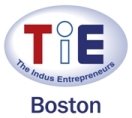
For the Startup Leadership Program’s October session, titled Choosing and Vetting Ideas, we had invited two speakers, Amar Sawhney and Jeff Carbeck to share their insights and advice on ideation and the earliest stages of building a startup. Amar and Jeff drew on their significant entrepreneurial experience in the life sciences to speak of this crucial stage in a startup’s life, when just about every decision can significantly sway its eventual fate.
 Amar’s bio and presentation appear in a previous post on this blog. Jeff is a co-founder and CTO of Arsenal Medical (formerly WMR BioMedical), the Chief Scientist of Nano-Terra and comes from a strong academic background in chemistry and material science. Jeff had much to say about the importance of finding a solid, trusted cohort of people with whom to embark upon entrepreneurial ventures.
Amar’s bio and presentation appear in a previous post on this blog. Jeff is a co-founder and CTO of Arsenal Medical (formerly WMR BioMedical), the Chief Scientist of Nano-Terra and comes from a strong academic background in chemistry and material science. Jeff had much to say about the importance of finding a solid, trusted cohort of people with whom to embark upon entrepreneurial ventures.
In this post, I’d like to cover some of my key takeaways from both talks.
- Unmet vs underserved need. Make sure you understand whether your idea serves an unmet or an underserved need, because they lead to fundamentally different kinds of products or services. The first is a change-the-world venture that may have a bigger payoff in the end if successful, but customers may not even realize they have an unmet need for which your product is appropriate. An idea aimed at an underserved need doesn’t carry the risk of shaping customer behavior, but faces the challenge of differentiating itself from a potentially noisy market.
- Product vs platform. Entrepreneurs may start with a product idea to alleviate a pain point for their target audience but may start to face pressure, especially from outside investors, to extend their idea into a platform. Although platforms may be powerful generalizations of a product idea, not every product is suited to grow into a platform. Platforms may blur an entrepreneur’s product development focus by pulling them in several different directions and increase the execution risk associated with the success of a new venture. Entrepreneurs must tread carefully when considering this question.
- Is your product or service VERY easy to use? Amar noted that ease of use is all too often sacrificed at the altar of efficacy and functionality. A new product or service that is VERY easy to use reduces friction and barriers to adoption and is one of the earliest tests of a product, especially one that meets an underserved need. Rather than attempt to ‘share a mountain’ with their competition, entrepreneurs must ‘dominate a hill’ by finding a niche where everyone in the value chain wins.
- Know your market. Even a revolutionary, high-impact idea with low barriers to entry can fail if it fails to navigate market conditions appropriately. It’s important to distinguish between the maximum potential market and the total addressable market. How fragmented the target audience is will undoubtedly influence the go-to-market strategy for the idea. An entrepreneur should also consider if product development (and manufacturing, as appropriate) needs to be vertically integrated in house or whether it can be outsourced at least initially to keep operating expenses low. Entrepreneurs must aim to orchestrate the value chain of their product rather than control it if they can (or as John D Rockefeller put it, “I want to own nothing, but control everything.”)
- Find the right people. Don’t hire everyone in your own image—assemble a diverse team with mutually complementary skills and experience in large and small companies. All employees should be preferably full-time so that everybody’s interests are aligned. First-time entrepreneurs should try and find a mentor to help them through the process of starting up. An entrepreneur should assemble a board of directors evenly stacked with insiders, independents and investors, taking care that investors alone don’t dominate the board.
- Funding. Entrepreneurs should invest some of their own money but not all of their savings. Consider asking customers to invest some money as additional proof of their belief in a product. Raising enough money to reach a significant milestone means that entrepreneurs don’t have to go keep embarking upon a financially and emotionally taxing fundraising process. Even if an entrepreneur plans to raise primarily friends and family money, having at least one deep-pocketed investor on board means that other investors don’t have to endanger their own net worth and can continue being friends and family.
- Funding from customers is better than funding from investors. Jeff related his experience of finding customers and getting them to fund initial product development and rather than undergo significant dilution from taking VC money just to develop a product. Jeff’s experience with relatively capital intensive materials and pharmaceutical startups particularly brought out this point. Entrepreneurs may occasionally have to do some work to uncover the real pain point that a customer has, because they may sometimes be reluctant to reveal them.
Several of us have multiple ideas that we’d like to pursue, but Amar and Jeff had many key insights to offer entrepreneurs to help with the all important question of which ideas deserve the assumption of personal and professional risk for huge rewards.








No comments:
Post a Comment